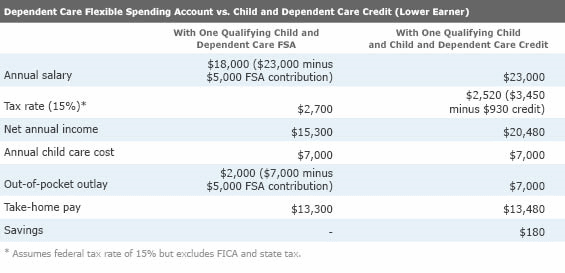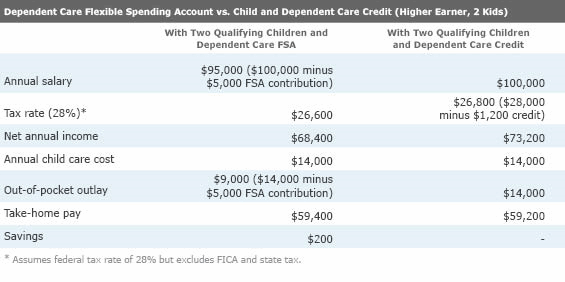Ways to Make Child Care More Affordable
If paying for day care is breaking the bank, these tips and tax strategies might help.
Question: I can't believe how much I pay for day care. Do you have any advice?
Answer: There's no doubt about it--child care is expensive. For many families, high-quality child care (including preschool where it is not offered in public school curricula) is a huge part of the family budget.
This interactive map issued by Child Care Aware examines the cost of child care in different states. Not surprisingly, the data shows that child care costs are a huge part of the median household budget: In 43 states and the District of Columbia, the average cost of facility-based day care for an infant exceeds 10% of state median income for a married couple with children. And single parents are stretched especially thin--in every state, the study found, the average cost of center-based infant care exceeds 36% of median household income for single parents.
Add rent/mortgage, food, clothing, and healthcare, and it's no wonder that parents often aren't able to save as much for retirement and college as they would like to.
But there are some ways to help defray the costs of child care. Here are a few ideas.
Dependent Care Flexible Spending Account Check to see if your employer offers a dependent care flexible spending account. This is a handy tool that can save you some money.
You can enroll in a dependent care FSA during your company's benefits open enrollment period (usually in November). Alternatively, you might be able to change your benefits if you have a qualifying life event, such as the birth of a child or adoption.
A dependent care FSA allows you to set aside a maximum of $5,000 of pretax money that you can use to pay for preschool, summer day camp, or after-school care for children younger than 13. (Tuition and fees associated with kindergarten or elementary school do not qualify.) Some employers may also contribute to the dependent care FSA, but the combination of employee and employer contributions cannot exceed $5,000.
Because you are setting the money aside before it is subject to payroll tax, you wind up paying less in taxes and ultimately increasing your take-home pay. The higher your salary (and hence, the higher your tax bracket), the bigger your FSA benefit.
Be aware, however, of a potential drawback of dependent care FSAs: Unlike health savings accounts, dependent care flexible spending accounts are use-it-or-lose-it. If you don't spend the whole balance by the end of the year, you lose it; you are not allowed to roll it over. (Though some employers allow a short grace period after year end.) As such, this option really only makes sense if you are confident you will spend at least the amount you put in the account on an annual basis.
Child and Dependent Care Credit The IRS offers a credit for the costs of care for a qualifying individual while you are working (or seeking employment). The dollar limit on the amount of the expenses you can use to figure the credit is $3,000 for one dependent or $6,000 for two or more qualifying dependents. The eligible expenses are similar to those of the dependent care FSA: infant/toddler day care, preschool, summer day camp, or after-school care for children under age 13 are all qualified expenses. (Tuition and fees associated with kindergarten or elementary school do not qualify.)
Depending on your adjusted gross income, the amount of your credit is between 20% and 35% of your allowable expenses, up to $3,000 for one qualifying child or $6,000 for two or more qualifying children. The percentage you use depends on the amount of your adjusted gross income. The maximum credit you can receive for one qualifying child is $1,050 (down to $600). For two children, the credit ranges from $2,100 (down to $1,200).
You Can't Double-Dip on the Tax Benefit Per the IRS, if you received dependent care benefits that you exclude or deduct from your income, you must subtract the amount of those benefits from the dollar limit that applies to you. This means that if you set aside of $5,000 of pretax money in a dependent care FSA, you must deduct that amount from the child and dependent care credit amount you are eligible for. For example, say you have two children in day care and would qualify for 20%-35% of a $6,000 credit. If you set aside $5,000 in a dependent care FSA, you would only qualify for 20%-35% of a $1,000 credit.
Because using the flexible spending account reduces the amount of the child and dependent care credit you can claim, you need to do some analysis to see which is of greater benefit.
Before you crunch the numbers, note these restrictions, which might make your choice easier: You can only claim the dependent and child care credit if both you and your spouse work and earn income. Also, the amount of expenses you use to figure your credit can't be more than the smaller of your earned income or that of your spouse. (So, if you earned $100,000 but your spouse earned $2,500 last year, $2,500 would be the maximum expense you could use to compute your credit.)
Also, note that the child and dependent care credit is a nonrefundable credit. That means it can reduce your tax liability by the amount of the credit, all the way down to zero. But if your credit is bigger than your tax bill, you will forgo these further credits (you can't get a refund from them), and you can't carry them forward. For that reason, if you anticipate that your tax bill will be low or that you will receive a refund, you may want to consider the dependent care FSA instead if it's an option for you.
Run the Numbers When deciding between the dependent care FSA and the child and dependent care credit, it's important to understand the difference between a tax deduction and a tax credit: Tax deductions reduce taxable income, and their value thus depends on the taxpayer's marginal tax rate, which rises with income. Tax credits reduce your tax liability dollar-for-dollar and do not depend on tax rates. (However, in the case of the child and dependent care credit, the value of credits depends on the taxpayer's income level.)
The general rule of thumb here is that if the percentage of the child and dependent care credit you would receive exceeds your marginal income tax rate, choose the child and dependent care credit. If not, use the dependent care flexible spending account. The lower your income (10% or 12% tax brackets), the more likely you are to benefit from using the child and dependent care credit. The higher your income (22% tax bracket and above), the more likely you are to benefit from the dependent care FSA. See the two examples below.


What if you have two children? For the lower-earning worker, the dependent and child care credit still has the edge.

For a higher-income worker, putting the maximum amount in a flexible spending account is still the more advantageous choice.

But because the parents in the example above paid another $9,000 beyond the $5,000 set aside in the dependent care FSA, they could claim 20% of $1,000 (the $6,000 credit for two qualifying children minus the $5,000 set aside in the dependent care FSA). This would net them another $200 in tax savings.
Alternatives Outside of tax-saving strategies, it might be worthwhile to explore some of these options when you're shopping around for the best child care solution for your budget:
Day Care Centers and Family Care (or Home Care) Centers Day care centers are commercial facilities, and family or home day care centers are run out of someone's home--usually the business owner. Both options are usually cheaper than hiring a full-time sitter or nanny, but facility-based child care centers tend to be more expensive than home day care centers. You'll want to confirm that the day care has all required state licensing and insurance, and you may also want to read the center's policies and procedures to see if it's a good fit with your parenting style.
On-Site Child Care If your company has on-site child care, consider that option. Not only can it save you money, it also offers you the peace of mind of having your kids near enough to check in on them during the day.
Flexible Work Schedules If you are able to negotiate a flexible work schedule with your employer, that could potentially lower your day care bill. For instance, you and your coparent could stagger your schedules--you work 7 to 3, and your coparent works 9 to 5. If the parent who starts work later can do the day care drop-off and the parent who leaves work earlier can do the pickup, you could shave a few hours off the time your child is at the day care facility.
Sitter Sharing, Cooperative Day Care, or Cooperative Preschools Cooperative preschools can be organized in different ways, from simple to complex. Sometimes a group of families will hire a teacher or teachers trained in early childhood education to establish a grass-roots preschool program. The preschool is administered and maintained by the parents. Other times the cooperative preschool is a highly organized and professionally run operation with hundreds of students, with parents volunteering and perhaps serving on the school's board.
Informal sitter sharing and more structured cooperative day care would work the same way, but the day care provider(s) may not need formal elementary-education training. Sharing the cost burden among families could make such an arrangement much more affordable.
Head Start Head Start is a subsidized program for lower income families that provides early childhood education and school readiness through local programs.
Free Preschools Freepreschools.org provides information about free preschool programs.

/s3.amazonaws.com/arc-authors/morningstar/3a6abec7-a233-42a7-bcb0-b2efd54d751d.jpg)
:quality(80)/cloudfront-us-east-1.images.arcpublishing.com/morningstar/BC7NL2STP5HBHOC7VRD3P64GTU.png)
:quality(80)/cloudfront-us-east-1.images.arcpublishing.com/morningstar/JNGGL2QVKFA43PRVR44O6RYGEM.png)
:quality(80)/cloudfront-us-east-1.images.arcpublishing.com/morningstar/IFAOVZCBUJCJHLXW37DPSNOCHM.png)